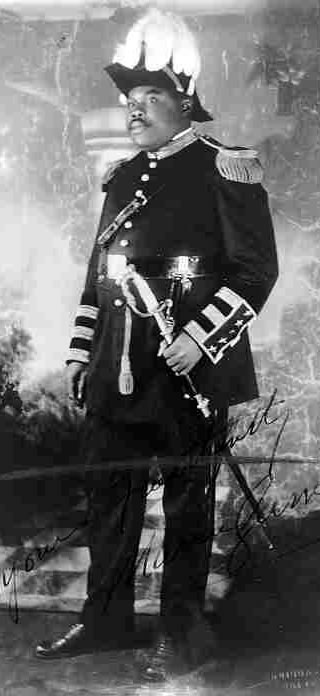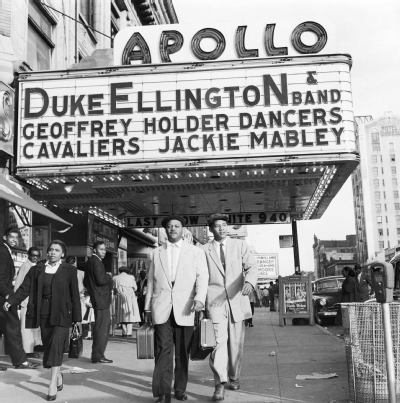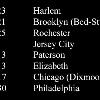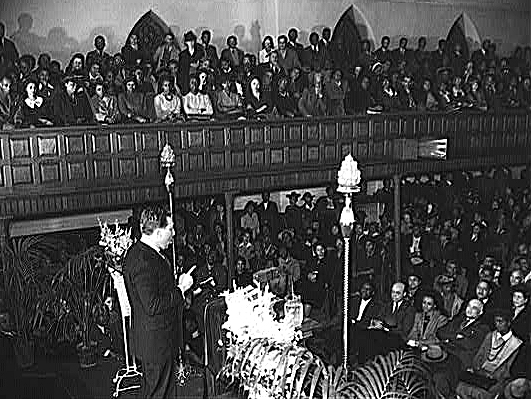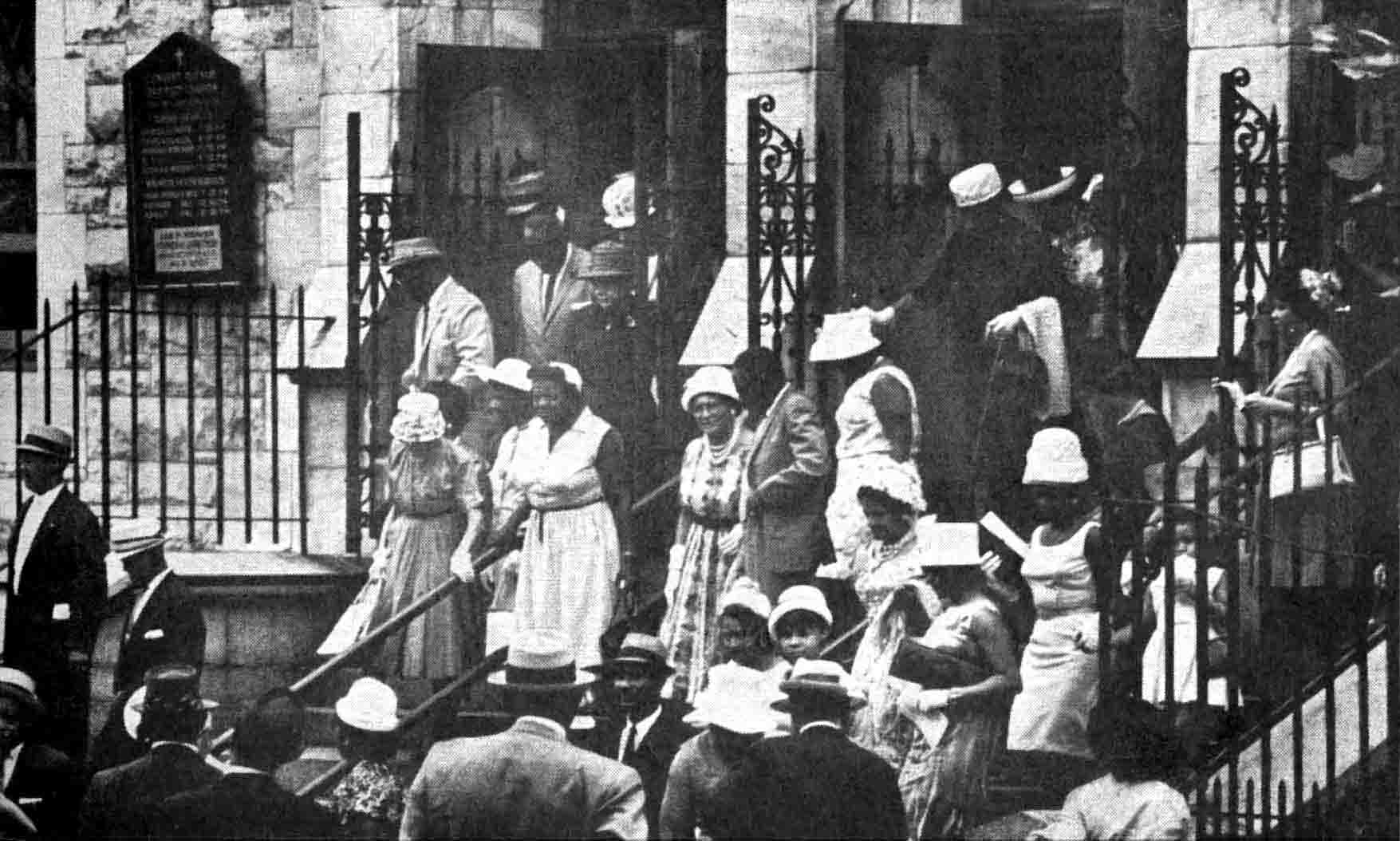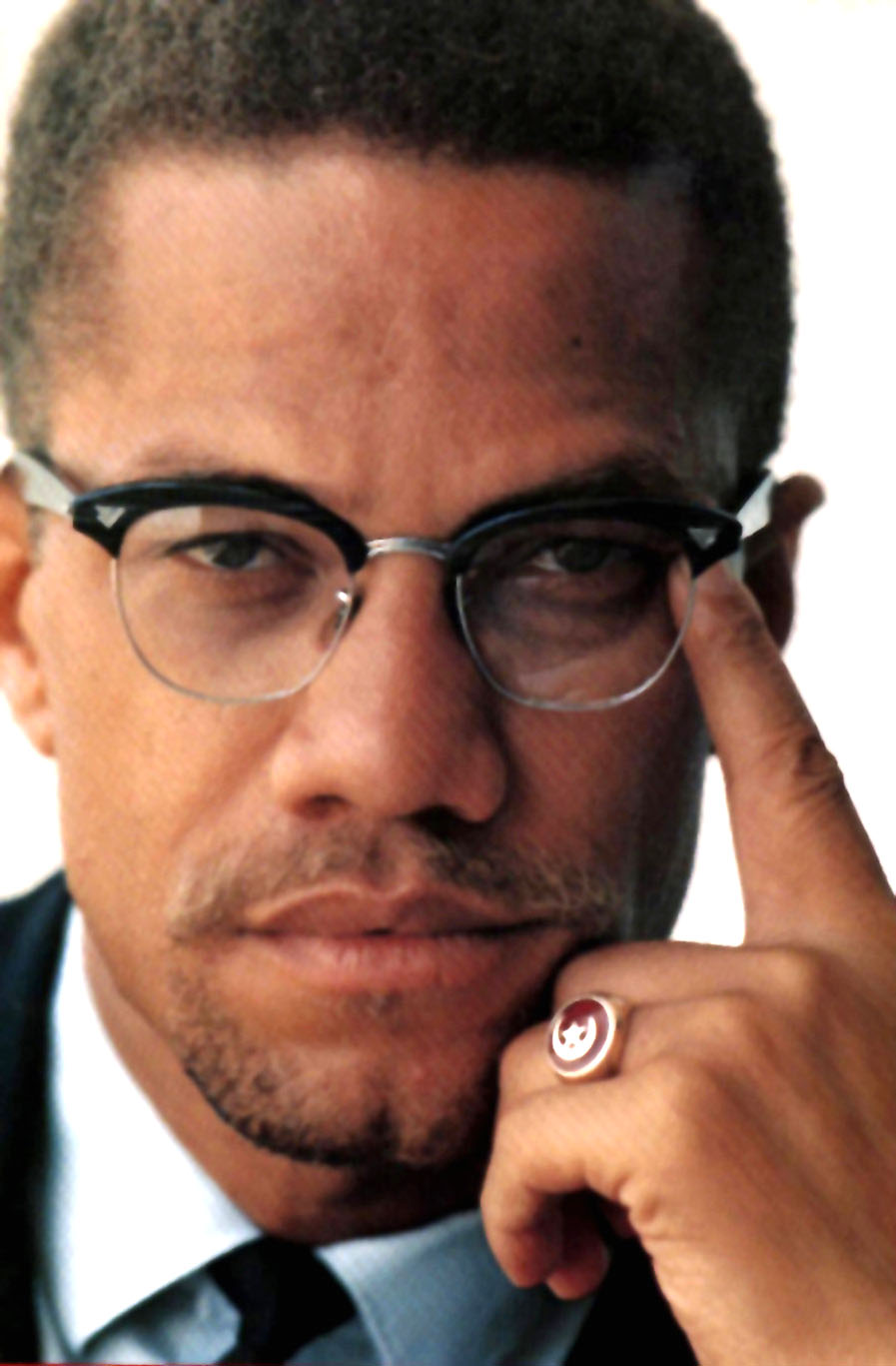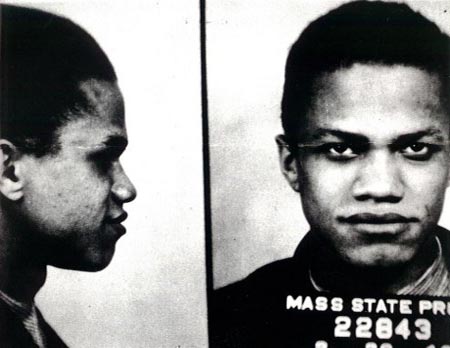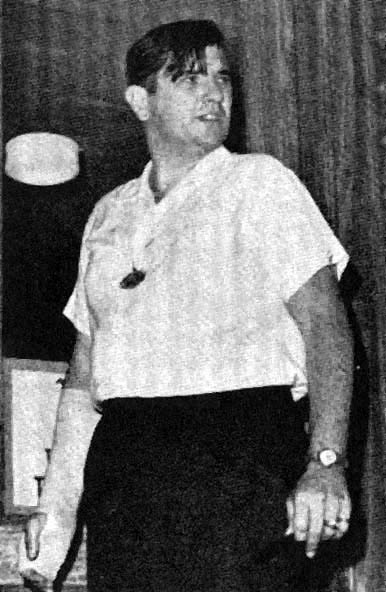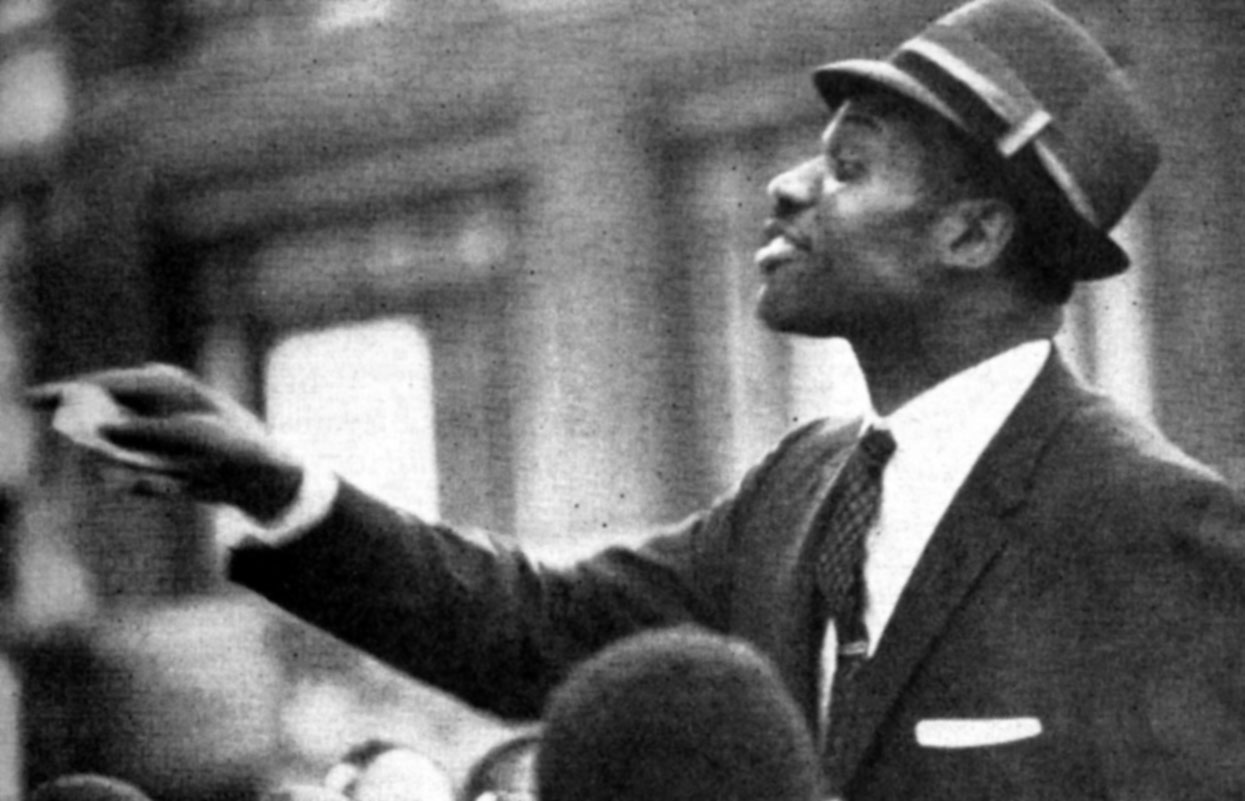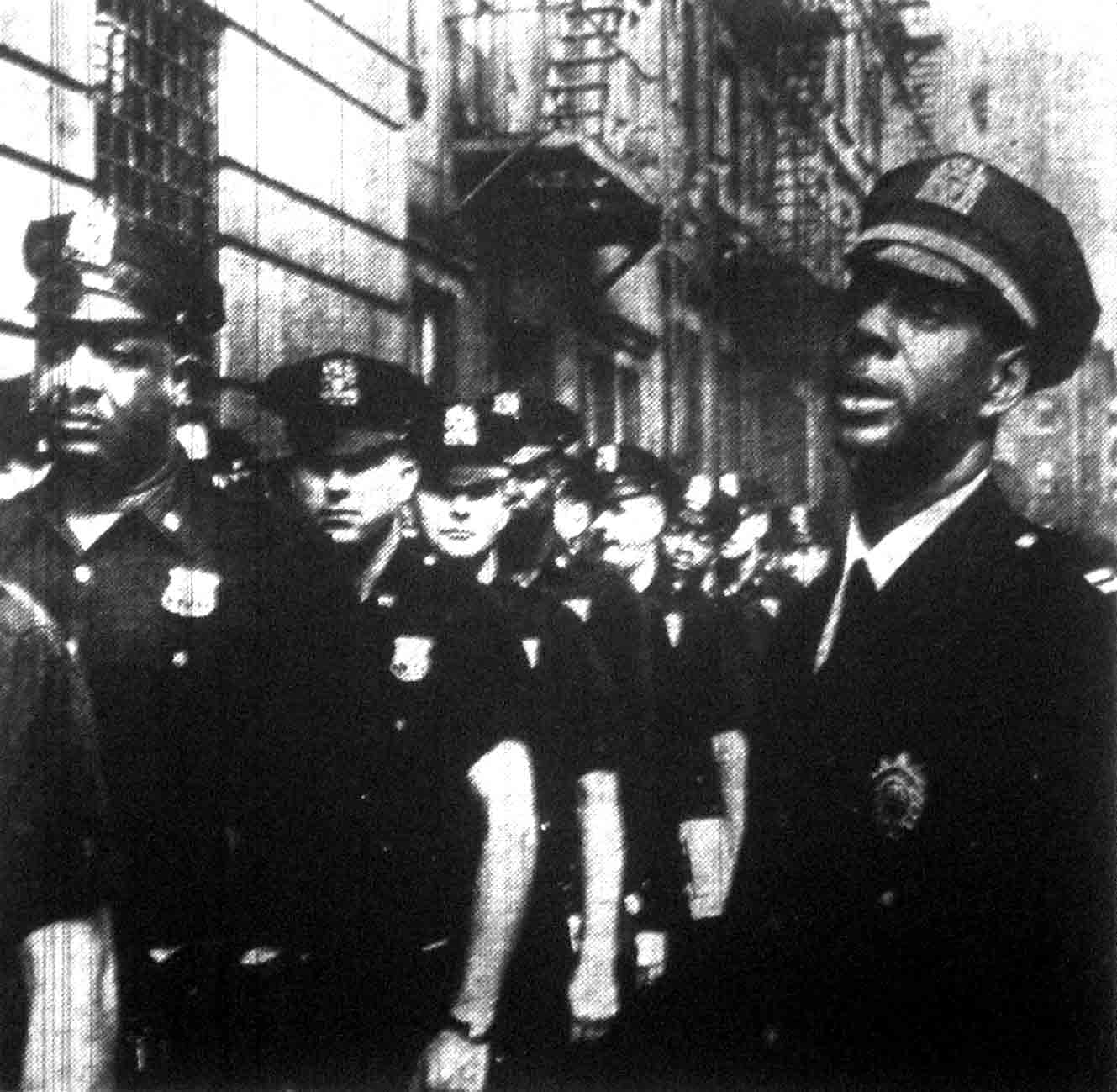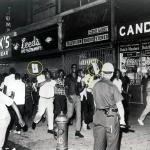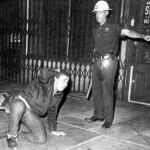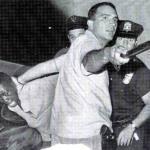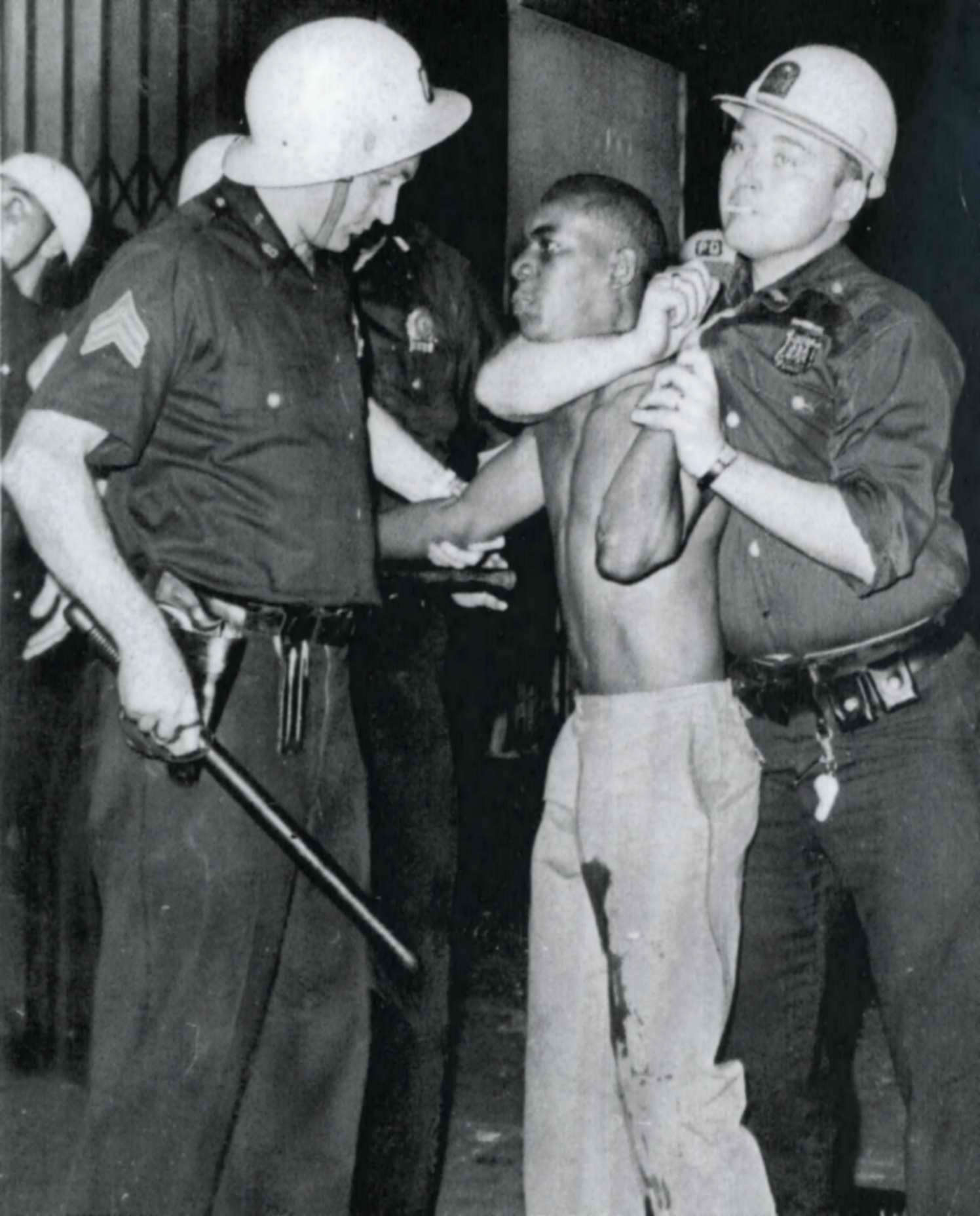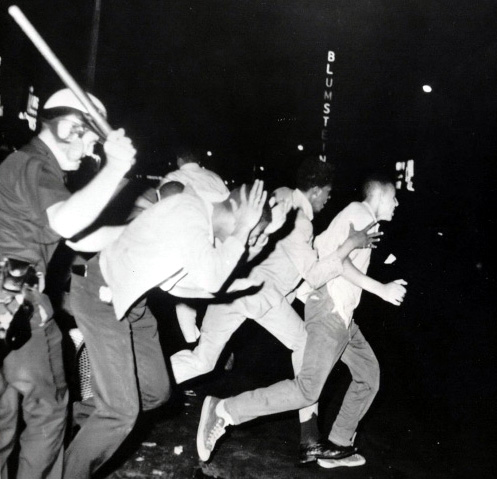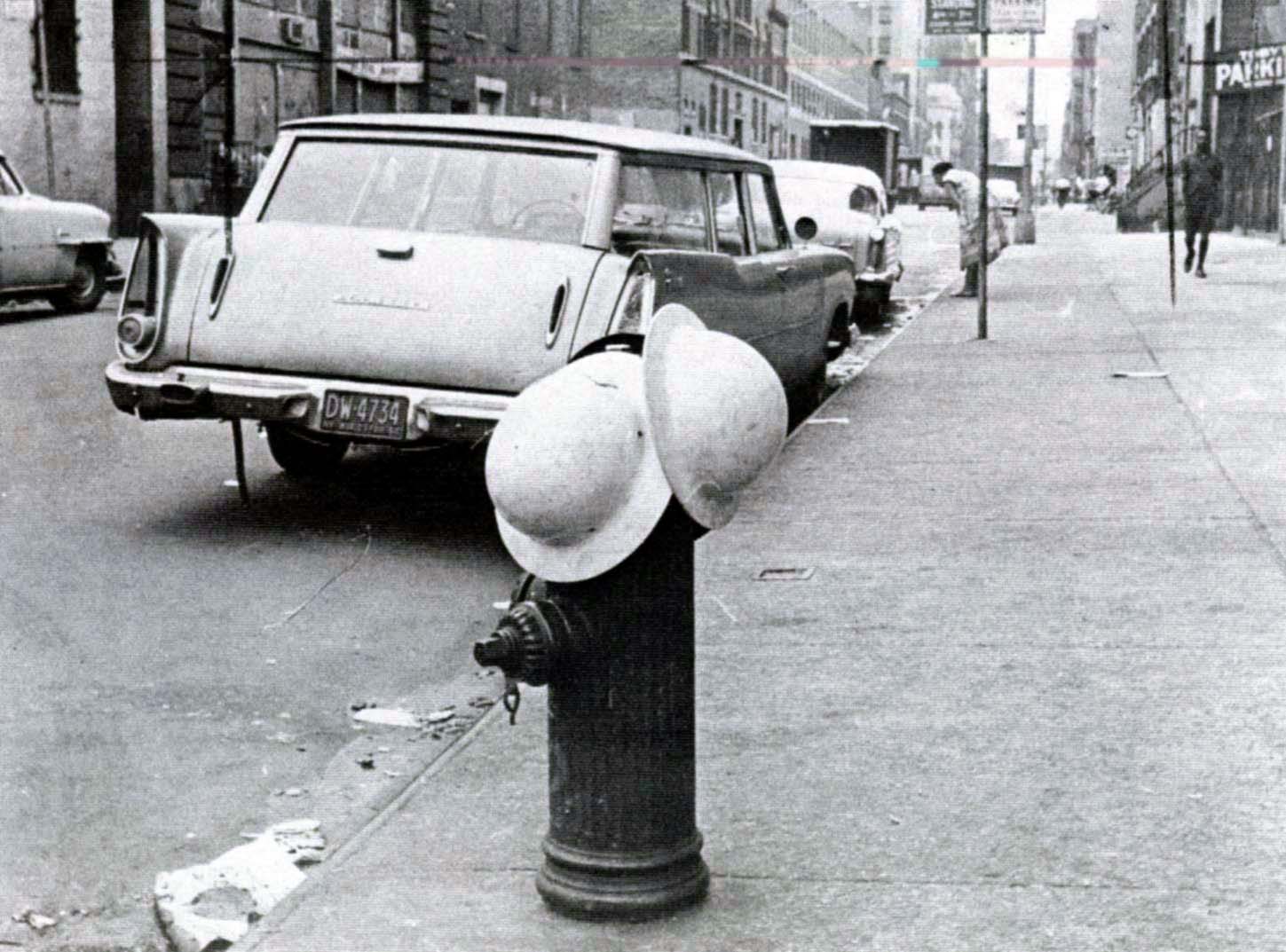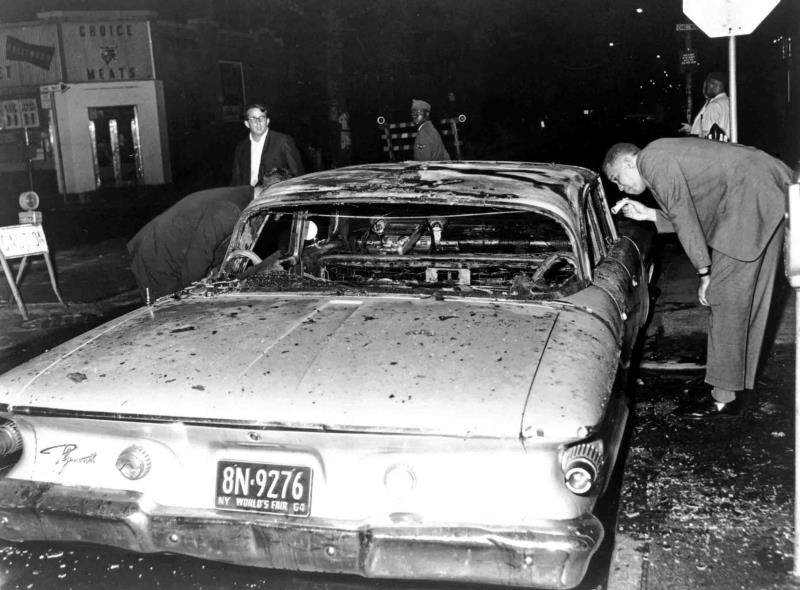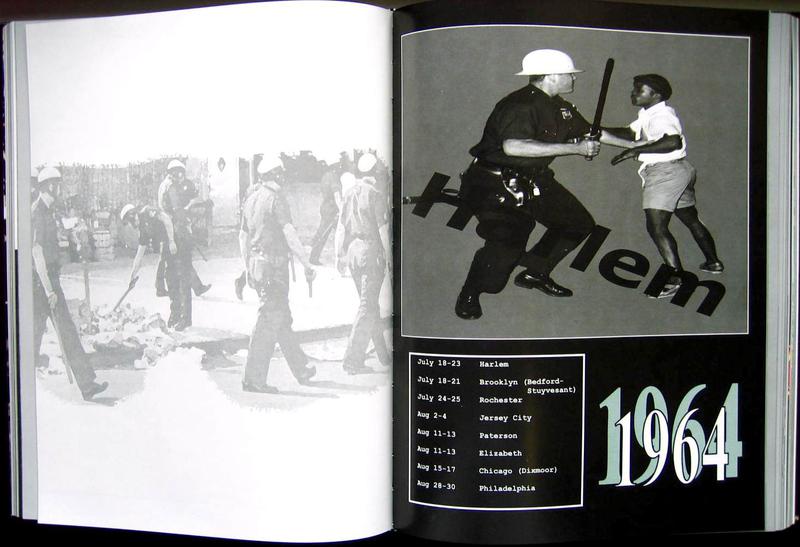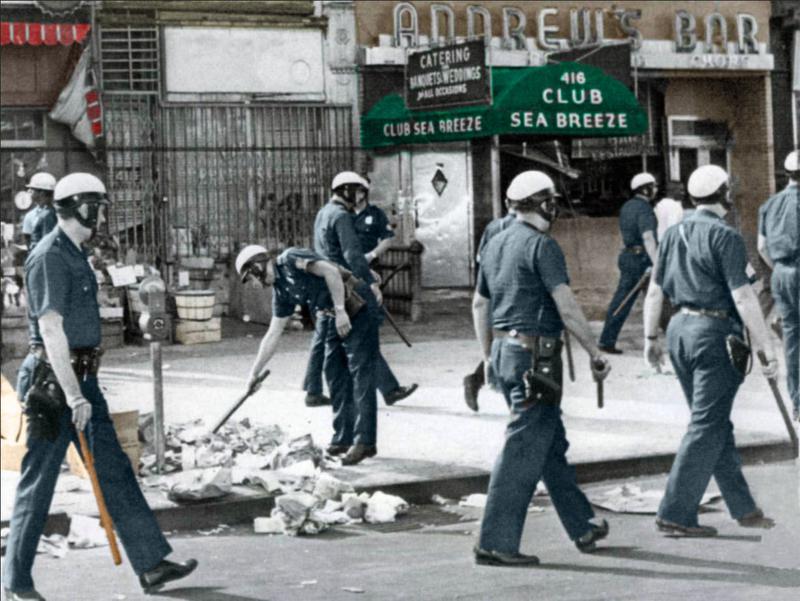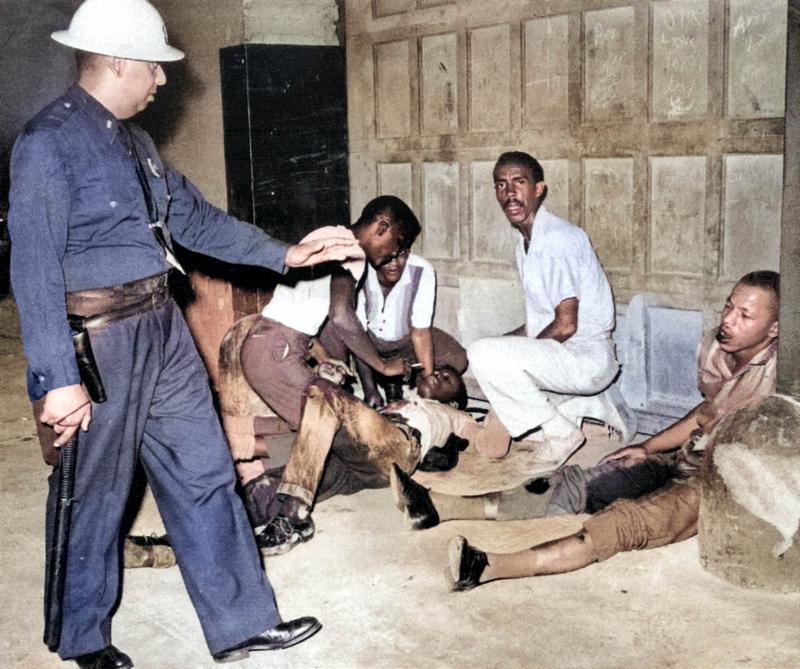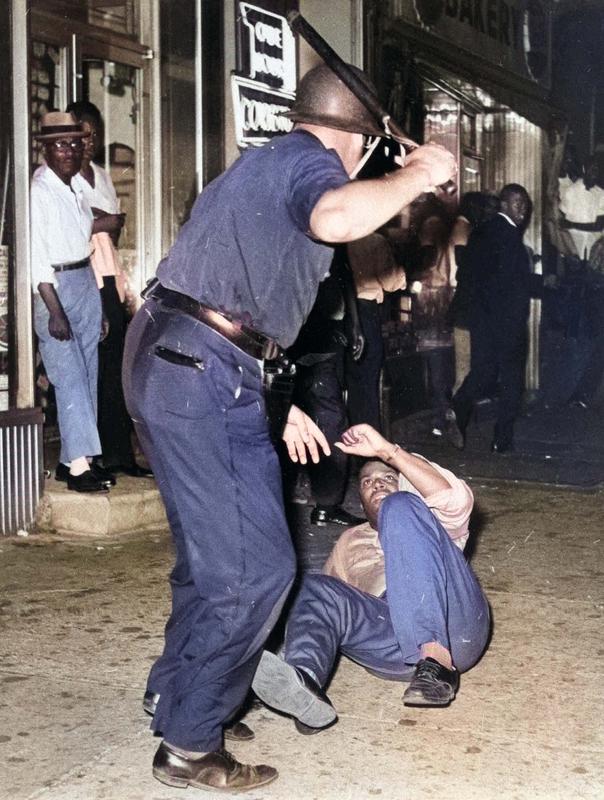Harlem - The Backlash Begins
The year 1964 saw the World’s Fair come to New York City. Its theme, oddly enough, was “peace through understanding.” It was an ambitious goal to aim for. Ten years earlier that concept would have been realistic but times had changed. New York was the first city in the world to have a black population of over one million.
Only a year after the Birmingham demonstrations and Martin Luther King’s historic speech on the Washington Mall, Harlem was more interested in settling old scores than seeking World’s Fair frivolity. The Harlem Riot in July of 1964 paled in comparison to riots that would soon follow but just as every seed needs water to grow, the urban insurrections that plagued the country in the hellish 1960's got their inspiration, directly or indirectly, from Harlem. Harlem was the black Mecca that cultivated and enlightened black minds across the country. It was also the one place the “blue eyed devil” could not dictate terms.
The July 16th killing of a black youth by a white police lieutenant ignited decades of scorn and contempt, spawning a six day rampage of violence. The hatred had been fanned to dangerous levels. What started as a protest march to the police station to demand justice quickly escalated to rage filled mob bent on revenge. The NYPD’S riot busting apparatus, the Tactical Patrol Force (TPF), locked horns with a sea of angry demonstrators and the ‘War of Harlem’ was on. It would be a war in which there would be no winner.
The Harlem Riot was the match to the tinder that had lay dormant for decades. Year after precarious year had rolled by as racial sparks inundated northern ghettos until finally, on a hot summer day, one caught, and it would be years before the fires of hatred would burn themselves out. In Harlem’s rich history and subsequent slow, agonizing tailspin towards failure can be found the riddle of rebellion, a rebellion that would catapult the country into five long years of tumult.
Harlem - The Black Mecca
Harlem was originally developed in the late 1800s as a hideaway for wealthy and middle class whites, a retreat from the confines of lower Manhattan. Developers built and built until the banks would loan them no more. Their greed would be a windfall for the black community. Realtors were forced to sublease to blacks to stave off receivership and the black Mecca was born. It was the first chance blacks had ever had to build a community in above average conditions and they would make the most of it. Blacks began to trickle into Harlem around 1900. By 1919, the black population of Harlem had quadrupled.
Black servicemen coming back from France in 1918 had been profoundly influenced by the various cultures they had encountered overseas. Instilled by Uncle Sam with a “fight for democracy” attitude, they brought this same will to fight back to Harlem. Blacks had been cut off from their African lineage because of the slave trade and were now attempting to reconstruct their culture. This new found black pride and solidarity would culminate during the 1920's with the Harlem Renaissance. Blacks from the South, Caribbean and Africa converged on Harlem during this time bringing with them unique experiences, cultures and educations to create this one of a kind community. Harlem became the world stage for the “New Negro,” who had made the transition from cotton field to concrete jungle and found a white audience that embraced the song and dance they brought with them. For the first time, blacks had established a solid middle class and a springboard to propel them to new cultural and economic heights. Enter Marcus Garvey.
Born in Jamaica in 1887, Garvey had traveled extensively throughout the Caribbean realized how poorly organized and subservient blacks were. Determined to rectify this, he founded the United Negro Improvement Association (UNIA) with the goal of educating and empowering blacks to run their own communities and eventually to send educated blacks back to Africa were they would rule the largely black dominated continent that was run by a minority of whites. Decades later his themes and teachings would influence prominent black leaders like Malcolm X in their search for black equality.
Below, the Black National Flag that Garvey created as
a visible symbol of black freedom. The colors represent various aspects of black history. Red: the blood that unites all people of African ancestry and shed for liberation. Black: represents black people yearning for a black nation. Green: the abundance of natural resources that make up Africa.
Marcus Garvey
Black Nationalist Flag
"Let me off Uptown"
The Harlem of 1964 had changed considerably from its once vibrant predecessor. The gaunt, drab grayness which now permeates this community belies the fact that at one time Harlem was a quilt work of black cultures that merged to form a colorful dichotomy unique only to New York.
The Italians moved to Harlem in the 1870's when it was little more than a stockyard. When the “El” train came to Harlem, so did the eastern European immigrants. Just before the turn of the century Harlem was Jewish. Land speculators gambled that Harlem would be the new crown jewel of New York and invested heavily. But the market collapsed and row upon row of elegant Harlem brownstones lay empty.
Desperate to pay off their notes, Jewish businessmen subleased to blacks who were more than anxious to leave the nightmarish slums of San Juan Hill and the Tenderloin on Manhattan’s Lower West Side. Harlem peaked during the 1920's, the fabled Harlem Renaissance, when it became the capital for black entertainers and literary artists.
Throughout the 1930's, Harlem abounded with legendary performers like Cab Calloway, Duke Ellington and Lena Horne. The streets seethed with life 24/7. Whites flocked uptown for food and entertainment at renowned venues like the Cotton Club, the Savoy and the Apollo. Anita O’Day’s smash hit “Let me off Uptown” seemed an eloquent descriptor of Harlem’s magnetic drawing power.
Riots in 1964
The Slow, Agonizing Spiral of Failure
By the 1940s Harlem had begun to change. The Great Depression had not only forced thriving businesses to take flight but its artistic cream as well. With the great black migration north during WWII, Harlem became the black capital of the world. In another historic first, New York elected its first black U.S. Representative in Adam Clayton Powell who would quickly make a name for himself.
Adam Clayton Powell Jr. was a charismatic and controversial black congressman from Harlem and the first black representative to wield any power in the U.S. Congress. A graduate of both Colgate and Columbia, he went on to become an ordained Baptist minister. An early crusader for civil rights, he took over his father’s congregation in Harlem and inculcated thousands of parishioners to the necessity of civil liberties and the deportment of the police. Elected to the U.S. House of Representatives in 1945, he quickly became a lightning rod for controversy. His habit of bringing black constituents into the “whites only” congressional dining room earned the ire of many of his fellow representatives. Powell later confided, “When I came here, no downtown hotel would rent me a room. No downtown theater would even let a Negro sit in the balcony. When I heard that the dining room for Representatives’ staff was off-limits to Negroes, I told my secretary and clerks to go down there and eat whether they were hungry or not!”
Harlem churches empty out - Communities were built around the church, becoming the moral glue that held neighborhoods together. Spiritual solidarity was central to the family concept. While the presence of the church is still strong in black neighborhoods the sheer numbers pale in comparison to yesteryear, and, as a result, the moral compass that previously guided families through hard times is now seemingly canceled out. Militant groups offered a cause or a philosophy to young teenagers who have never had anything to believe in. Harlem’s Adam Clayton Powell, a preacher himself, cited “They [black teenagers] don’t believe in the old line, fundamentalist preaching of the preacher who used to be the pivot of the black community.”
"Thousands of people come to Harlem churches to hear the
gospel ........ They want to know how it is that you may not have
food on your table or money in your pocket and sound so happy."
A Harlem State of Mind
By the 1950's the frivolity of the Renaissance had long since been silenced. Having experienced race riots in 1935 and 1943, fewer and fewer whites dared venture uptown. Those who did were given a very cool reception.
By the 1960's Harlem was reeling towards decay. The big money had left and the luster was replaced by crime and poverty. Harlem was a place where “Mr. Charlie” no longer entered, except in the form of the NYPD. Whites had fled in terror at the impending warning signs of a black revolution. Senseless racial muggings were way up. The tension at 125th Street and Lenox Avenue, Harlem’s Time Square, was several atmospheres heavier than anywhere else. The frenzied ravings of street corner man, cataloging the indignities inflicted by “whitey” and the agonies of the ghetto, found no shortage of sidewalk shufflers to cheer him on. Cruel cultures that mortify outsiders are accepted by locals as normal. Harlem was caught in the gravitational pull of rebellion and there was no veering off course.
On some streets, men who cannot find jobs sit on stoops playing pinochle or Georgia skin, drinking "Dirty Bird" wine at 60 cents a pint from bottles hidden in brown paper bags. Buzzing around them are children who frolic unsupervised far into the night, wearing latchkeys on strings around their necks because there is nobody at home to care for them. Half of Harlem's children under 18 live with only one parent or none at all. Harlem’s endless tenements and hovels concealed a growing array of invisible poor. These were the “born” poor, their plight reinforced by a wretched environment and poor educational system, as good as a prison wall seemed to buttress their chances of failure. There are blocks here so decrepit they would have awed the missionaries of the 19th century.
With an unemployment rate twice as high as New York City itself, Harlem’s frustrations slowly spilled over into the streets. There was little if any greenery in Harlem and no air conditioning. When people wanted to cool down they went up on the roofs to seek a stubborn breeze or massed on the building stoops to rehash recent agonies.
The most distressed individuals, of course, turned to dope, the great lubricant of the ghetto. Glassy eyed addicts roamed the street with only one objective in mind, another fix. Others drowned their sorrows in the Niagara of liquor stores that, not coincidentally, seemed to crop up on every street corner to capitalize on the abundance of people whose only wish was to forget their predicament.
By 1964 Harlem was 95 percent black, 230,000 people jammed into only 3½ square miles. Most of the businesses were mom and pop stores, holdovers from the Jewish days ions ago. They were still owned by whites who had long since moved their residence elsewhere. Fewer than 20 percent of Harlem’s stores were black owned, so the majority of the money that was spent in the neighborhood left to the suburbs each night. The result-a perpetual decline in the state of the community.
The five percent white that had remained behind, mostly Jewish shopkeepers, were now in the eye of the black storm and would soon wish they had left with the rest. This would be a reoccurring theme in many future ghetto eruptions.
The anti-white animosity that saturated Harlem was quickly reaching lethal levels. Whites were regularly being taunted with racial invective. The “Blue-eyed devil” was a marked man in Harlem. After dark his presence was an invitation to assault. Black and white policemen strongly advised whites to “take it back downtown.” Black gangs which were formerly enemies now teamed up to “get whitey.” Vulnerable whites were slashed, beaten and sometimes killed by black toughs out for revenge.
Most of the white merchants have owned stores in Harlem for 30 or 40 years. They have seen
the neighborhood change slowly, first from one that contained whites as well as blacks to a black community seething with frustration and Black Nationalism. "This shop is owned and operated by black men," says a sign in the window of a shoe repair shop on Seventh Avenue.
One white New Yorker philosophized, "The way I hear it, the black gangs concentrate on marijuana. Why? Because it sets them crazy. Heroin is different. It tranquilizes. But, man, these cats that want to see whites killed off, they don't want tranquility. I used to live in Harlem, but moved to Queens a couple of months ago, because I figured that sooner or later, Lenox Avenue's going to be a river of blood."
Harlem's rage against "Whitey" takes many forms. It can be expressed in the frustration-choked stammering of the functional illiterate or in the cool, articulated scorn of the well-to-do. But it is constantly there, hanging in the Harlem air, so palpable one can almost stroke it. On 125th Street, white store keepers who used to keep their shops open till 9 p.m. now pull the steel shutters down at 6 and high tail it out of Harlem before dusk. The carloads of whites who used to make nocturnal forays up to Lenox Avenue for laughs & love have disappeared, never to return.
"It used to be," said one white store owner, "that you would sell them something for 25 cents and they would say it was worth 15 cents and say you were cheating them. But now they say you're cheating the black race." Another white store owner recalled being visited by a Black Nationalist.
"He was one of these Muslims and he pointed to a black girl that worked for me and said, 'White man, see that girl there? In five years she will own the store and you will be sweeping.' "So I told him they wouldn't have to wait five years, that I have always done the sweeping here and still do.
I told him as a Jewish man that we have had our troubles, too, but you people want to start at the top and we are willing to start at the bottom."
Harlem was lodged in the throat of New York City like a shoe sideways. The city cannot spit it out and is loathed to digest it. Meanwhile, the frustration of its inhabitants was rapidly approaching a flash point and America's largest racial ghetto was on a collision course with rebellion.
Malcolm X - The Hate that Hate Produced
In many respects Malcolm X was the quintessential byproduct of the ghetto. He was the recipient of untold sufferings which branded into his mind a hatred for those who oppressed him, the white race.
As a troubled youth, the tempting vices of the streets were too much for him to refuse and he faced a life filled with incarceration. But a chance meeting in prison would propel him from an unknown con man into a legendary ghetto icon.
The Malcolm X of the 1960's came off as a young man consumed with towering rages and misguided hatreds, bent on starting a race war to make amends for the many indignities he had incurred.
Upon further inspection of his tragic background, however, the foundation of his ideology becomes quite clear. He represented the black rage which reached a crescendo during the riotous ‘60's. Yet in his thirty-nine years, this self-educated militant became the dominant voice of the ghetto and a general to the multitude of black youth who grew up amidst the same urban hopelessness that had brought him down.
Malcolm Little was born in Omaha in 1925. His father, Earl Little, was a Baptist minister and strong advocate of civil rights. His outspokenness on that subject rankled many in the white community to such an extent that they had to move. The family moved to Lansing, Michigan in 1931 and tragedy followed close behind. Late one night, in the inky blackness of Michigan Avenue, Earl Little tried to board a moving trolley and missed the step, falling beneath the wheels, crushing his left leg and arm. He died two hours later at Sparrow Hospital. Legend has it that the Black Legion was responsible but no evidence exists to substantiate this. Malcolm was six years old and the seeds of hatred had been firmly planted.
It would get worse. Malcolm’s mother strived valiantly to hold the family of six together but as the years went by the family became more and more impoverished. She finally suffered a nervous breakdown and was committed to a Kalamazoo state psychiatric hospital where she would spend the next twenty-four years of her life. The family was broken up and sent to various orphanages.
After being bounced around to several foster homes, he went to stay with his stepsister in Boston. After several junkets to New York City in the early ‘40's, he quickly became fascinated with Harlem and its dominant black culture. He became a street hustler, pushing drugs, running numbers and in the process became addicted to cocaine.
Malcolm’s mug shot after his arrest for
B & E/grand larceny, an offense in which
he would forfeit the next seven years of
his life. It was here that he began his
transformation from a ghetto thug into
a razor-sharp militant. He would emerge
from prison more focused on an ethnic
rather than a personal vendetta.
He used the street name “Detroit Red”,
"Red" because of his reddish-brown hair
he inherited from a white grandparent and
"Detroit" because he grew up in Michigan.
Malcolm X - a.k.a. "Detroit Red"
For years the street-smart teen managed to stay one step ahead of the law, but his luck ran out in 1946 when he returned to Boston and bungled the robbery of a jewelry store. He spent the next seven years of his life in Massachusetts reformatories. By his own admission he had a very limited vocabulary when he entered prison. But his desire for knowledge, while temporarily dormant, had not left him. He spent the majority of his stint reading vociferously, which greatly added to his future debating skills. He was now determined to fight white oppression with his intellect rather than his fists.
After his release in 1952, he became a strict disciple of the Nation of Islam (NOI) and quickly became their national spokesman under his mentor, Elijah Muhammad. He established mosques in Detroit and Harlem, spreading the word about the Muslim faith to urban blacks. But by 1964, Harlem was more interested in rumbling than rhetoric.
Seventh Avenue and 125th Street is the heart of Harlem, the black Times Square. Some restaurants are full of white merchants at lunch and jammed with middle class blacks for supper, much to the dismay of Black Nationalists whose rhetoric laces the air.
"If you're white, you're right......
If you're brown, stick around.....
If you're black, stay back!
NYPD Lt. Thomas Gilligan
A Day of Reckoning
Like so many riots of the 1960's, the Harlem riot followed an isolated incident that in quieter times would have passed almost unnoticed. It took place on Thursday, July 16th in Manhattan's
predominantly white East 70's. For reasons now lost in a tangle of differing tales, a white apartment superintendent turned his hose on black youths who were loitering on the buildings front steps and refused to move. The kids threw bottles and garbage can lids at the man and 15 year old James Powell chased him into a building. The ruckus caught the attention of off duty NYPD Lieutenant Thomas Gilligan who quickly found himself face to face with the knife wielding Powell. After being slashed on the forearm, Gilligan drew his revolver and took aim, warning Powell one last time. When Powell lunged again, Gilligan fired, killing Powell.
To many, it seemed incredible that Gilligan, a 16-year veteran, could not
have dealt with the boy without resorting to gunfire. For the next two days
Harlem seethed. Blacks, long lacerated by the painful shards of ghetto life,
by emotions stirred in the civil rights movement, by their hatred for police,
whom they regard as both oppressive and corrupt, were only too ready to
believe that the Powell death was a case of deliberate murder. 'Police
brutality' became the battle cry.
Saturday would be a day of reckoning. As young Powell was being
mourned in a Harlem funeral parlor, a deluge of emotions spilled out into
the streets. Hate preaching demagogues took to the street corners, "we
don't have to go to Mississippi because Mississippi is here in New York."
By Saturday night, the most restless elements of Harlem, the broken or no
home kids and the seething, out of job adults, were bristling for a fight.
It was hot and humid, always a prime ingredient for a riot. Scores of
people gathered for an outdoor rally. After harangues by CORE leaders,
the Reverend Nelson Dukes launched into a 20 minute tirade, exhorting the crowd
to march to the West 123rd police precinct and present their demands.
The Reverend Dukes exhorted the crowd, then latter regretted it.
When the vengeful crowd arrived the police were waiting. Police tried to hold back the agitated mob as the voice of a senior officer radiated over the bullhorn, informing the crowd that the district attorney was investigating the incident. The crowd would have none of it. A local leader who tried his hand at diplomacy was jeered. Soon a shower of bricks and bottles came from the rooftops. The police had seen enough. On a signal from a sergeant, the riot trained
Tactical Patrol Force (TPF) raised their batons and waded into the crowd, flailing away at anyone unfortunate enough to cross their path. Shrieks of "killer cops" and "murderers" filled the air. The inflamed mob ran down streets breaking windows and looting as they went. The battle for Harlem was on.
Some rioters lobbed Molotov cocktails into the battalions of pursuing police. An organization called "Harlem Freedom Fighters" had helpfully issued a crude flier: "how to make a Molotov Cocktail. Instructions: Any empty bottle, fill with gasoline, use rag as wick, light rag, toss and see them run!"
Rioting soon spread to neighboring Bedford-Stuyvessant across the river in Brooklyn, then to Rochester. Scuffles blossomed into full-fledged battles between rioters and police. At first, police tried to break up the mobs with night sticks but quickly graduated to tear gas, then police dogs and finally fire hoses. New York's night of Birmingham horror had arrived and with it hundreds of injured and arrested.
At the peak of the Harlem riot, police, aiming over the heads of the rioters, fired more than 2,000 shots
The gunfire, instead of dispersing the rioters, seemed only to embolden them. Civil rights leaders who attempted to intervene were jeered, taunted and threatened.
Right: A rare sight in Harlem in those days, black NYPD police Captain Lloyd Sealy leads his troops to the 'front'.
Early casualties in the battle of Harlem
A major clash came on the night of July 22, when 1,000 rioters mounted numerous attacks against riot police. That night, for the first time, police on horseback were used against rioters.
Police patience now gone, looters were now being shot with little warning. Over 600 stores were
ripped open like a pinatas. Patrol cars with sirens screaming raced along 125th Street responding to
"10-13's." the call for assistance.
On Harlem's blood stained streets, leaflets with this message are circulated - "The Harlem Defense Council calls on all black people to set up block committees for the purpose of defending every block in Harlem from the cops."
A member of NYPD'S Tactical Patrol Force (TPF) administers the dose to an unyielding rioter. The men from the Tactical Patrol Force sent to the scene are members of a group of about 200 handpicked men, all over six feet tall, all trained in judo and all under 30 years of age. The force was organized as a roving unit that could be dispatched to a troubled area.
NYPD tangles with rioters - The rioters usually got the worst of it.
At the behest of Mayor Wagner, Martin Luther King made his way onto the streets of Harlem and
was heckled by the rioters almost as bad as the police were. It was a baptism of fire for King who
now greatly suspected he was not reaching the masses of the northern ghettos and the disheartening proof was now resonating in his ears.
There's a ragging tiger on the loose up here
in Harlem and the big cats in the Civil Rights
Movement can't ride it and can't tame it.
- Harlem social worker
Above: New York police detectives examine the charred remains of a police cruiser, the target of a well-aimed Molotov. The license plate bears the laconic motto “World’s Fair,” a dream that had now gone tragically awry. But there were other dreams that also went unfulfilled. Northern blacks saw fellow southerners making progress and had for a century since the debacle of Reconstruction been told to trust in their government and the Constitution. With Harlem, that faith in the system had once and for all been shattered. Henceforth, ghettos seething with frustration, unable to get the attention of government and society to help them in their plight, would now resort to rioting as a fait accompli.
Below: Abandoned police riot helmets adorn a fire hydrant signaling the end of the Harlem riot. It was
just the beginning, however, of five long years of urban riots that would tear the country apart. The term “long, hot summer” became synonymous with the riot season (May-August), as city after city sweated through the weather and held their collective breath at the sight of even the smallest police incident. Within weeks of Harlem the infamous Gulf of Tonkin incident would propel the country headlong into the Vietnam War. Now the country would be fighting a war on two fronts.
